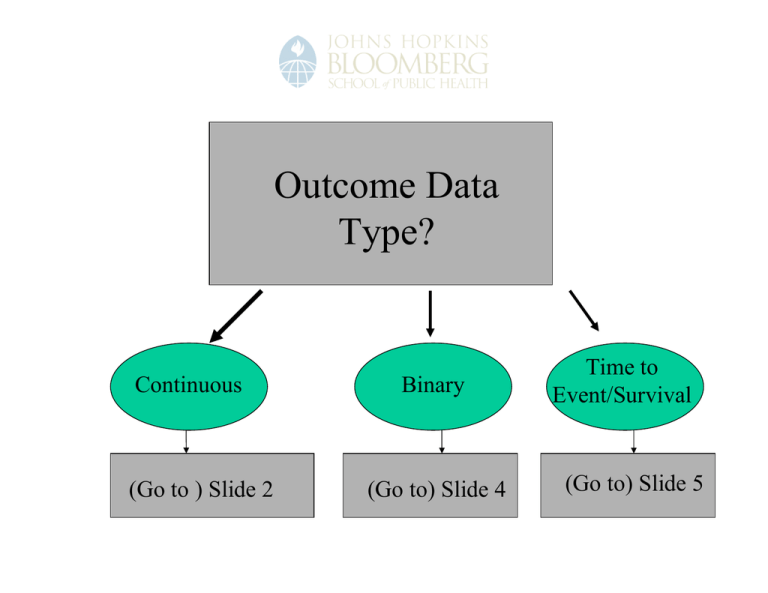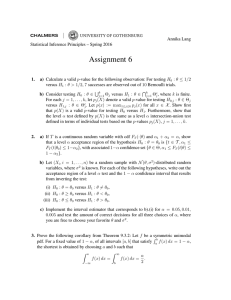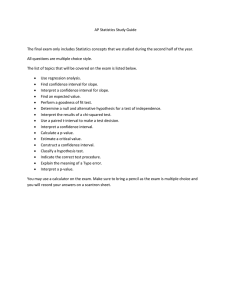
Outcome Data
Type?
Continuous
(Go to ) Slide 2
Binary
(Go to) Slide 4
Time to
Event/Survival
(Go to) Slide 5
2-Group
Comparison?
Slide 2, Continuous Data
Yes
No (go to Slide 3)
Paired Data?
Yes
n1and n2 > 10?
No
Yes
Paired
t-test
-If n > 60, create confidence
interval and compute p-value
using normal distribution.
- If n < 60 create confidence
interval and compute p-value
using “t” distribution with
appropriate degrees freedom
2 sample
t-test
No
Yes
-If n1, n2 > 60, create confidence interval
and compute p-value using normal
distribution.
- If n1 and/or n2 < 60 create confidence
interval and compute p-value using “t”
distribution with appropriate degrees
freedom
Data in both groups
Normally Distributed?
No
Mann –
WhitneyWilcoxon
Slide 3, Continuous Data
2- Group
Comparison?
No (more than 2 Groups)
ANOVA
NOTE: the p-value will only allow you to ascertain that at
least on group means is statistically significantly different
than the other group means. Further work is required to
determine which groups are different (two sample t-tests)
and the magnitude and direction of the difference (sample
mean differences, 95% confidence intervals)
2- Group
Comparison?
Slide 4, Binary Data
Yes
No (more than 2 Groups)
Do your samples meet size
criteria for large sample
methods?
Yes
Normal Approximation, ChiSquare, Fisher’s Exact
Create confidence interval for
difference in proportions using
normal distribution.
Chi-Squared
Test
No
Fisher’s Exact
Test
No simple straightforward method for
computing exact confidence interval on
difference in proportions –consult a
statistician!
Slide 5, Survival
Data
2- group or more than 2 groups comparison
but only one categorical grouping variable –
ex: age groups, ethnicity, hair color etc..)?
To estimate survival curves and percentiles of
survival times, use Kaplan-Meier method
To test for statistical differences in survival curves,
use log-rank test or Breslow-Gehan test
Copyright 2005, The Johns Hopkins University and John McGready. All rights reserved. Use of these materials permitted only in accordance with license rights
granted. Materials provided “AS IS”; no representations or warranties provided. User assumes all responsibility for use, and all liability related thereto, and must
independently review all materials for accuracy and efficacy. May contain materials owned by others. User is responsible for obtaining permissions for use from
third parties as needed.








